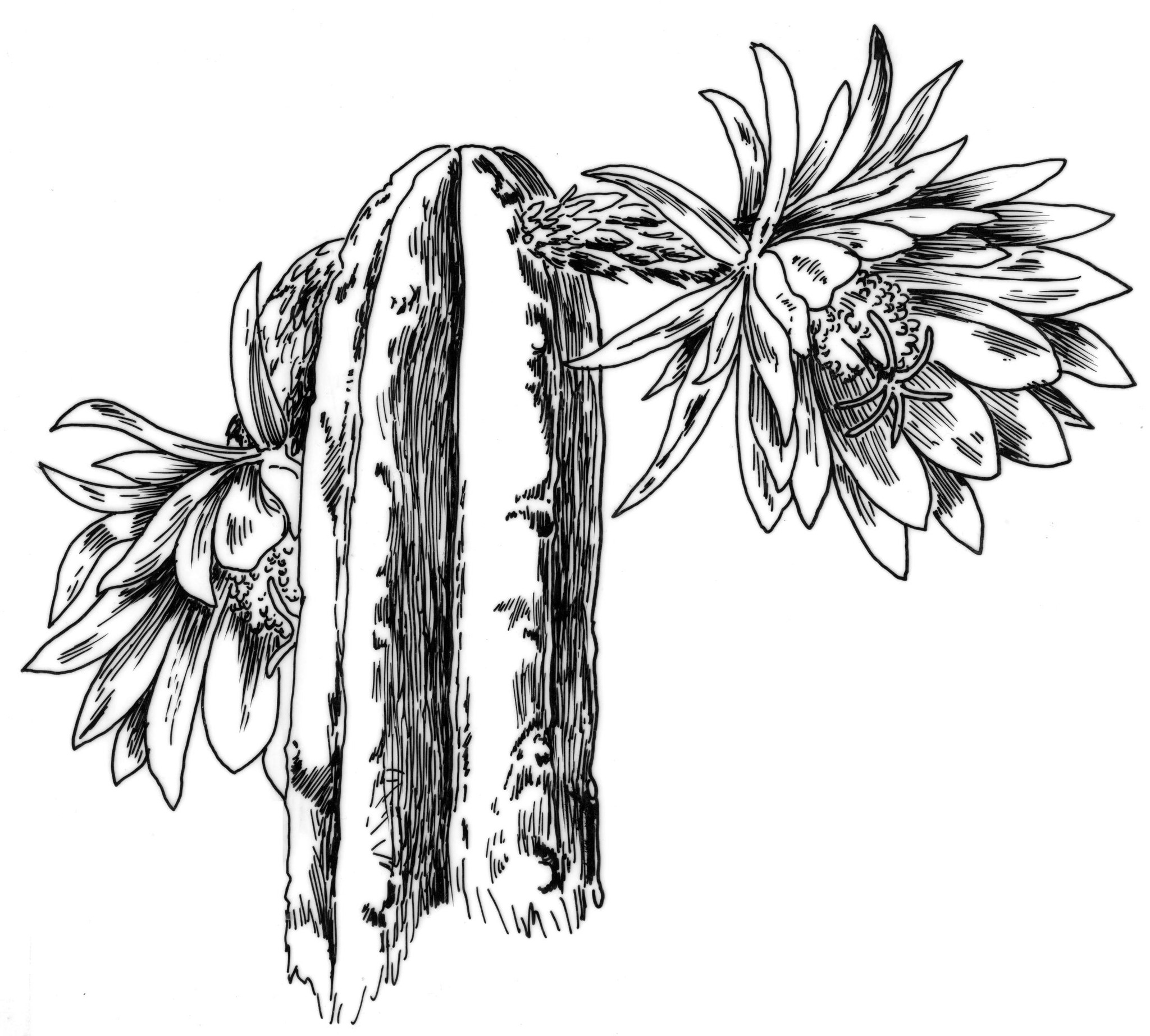
Greek echinos—hedgehog, opsis—like.
Body solitary or in groups, prostrate or erect, from flattened spherical to cylindrical, simple or branching. Spines pronounced to few and insignificant, mostly uniform. Ribs few to many, often tuberculate. Flowers nocturnal (lowland mostly pale-flowered species), or diurnal (mostly high-ground species with brightly coloured flowers), funnel- to bell-shaped and arising at tip or side of the body; stamens often forming a ring at the throat and with fused ring at the base. Pericarpel with narrow, sometimes bristle-tipped or hairy scales that are rarely bristly in their axils. Fruit fleshy to dry, spherical to oblong or ovoid. [Acanthocalycium Backeb., Lobivia Britton & Rose, Pseudolobivia (Backeb.) Backeb., Trichocereus (a. Berger) Riccob.]
is complicated by extensive hybridisation both in horticulture and probably also in nature. The genera Trichocereus and Lobivia are now generally included within Echinopsis pending thorough revision. In general terms the core Echinopsis species are small with ribbed stems and long-tubed nocturnal flowers while the larger nocturnal flowering species were placed in Trichocereus and the small spherical to shortly cylindrical species with short-tubed diurnal flowers in Lobivia. Other genera intergrade between these characters.
Several colourful variants known as the 'paradisia hybrids' are available.
Species occasionally offered include those following. E. arachna-cantha (Buin. & F. Ritter) Friedr. has spines that look like spider's legs. E. candicans (Salm.-Dyck) D.R. Hunt from W Argentina has white fragrant flowers, 9-11 ribs and 10-14 yellowish radial spines. E. eyriesii (Turpin) Pfeiff & Otto from S Brazil to N Argentina has white flowers to 25 cm long. E. marsoneri Werderm. from N Argentina has mostly golden flowers with dark brown to purplish throats. E. maximiliana Heyd. from S Peru and N Bolivia has scarlet flowers with orange-yellow throats. E. semidenudata Cardeñas from Bolivia has white flowers and knobbed ribs. E. spiniflora (K. Schum.) Berger from W Argentina has 16-20 pointed, narrow-edged ribs and diurnal flowers less than 6 cm long. E. tubiflora (Pfeiff.) K. Schum. from Argentina has white flowers to 24 cm long.
Seed or offsets.
Flowers lateral on the body, trumpet-shaped, hairy and scaly and with a distinct ring of stamens in the throat.
About 60 species mostly from C and S America.
The key includes more commonly grown species but should be used as a guide only.
Source: (1997). Cactaceae. In: . Horticultural Flora of South-eastern Australia. Volume 2. Flowering plants. Dicotyledons. Part 1. The identification of garden and cultivated plants. University of New South Wales Press.
